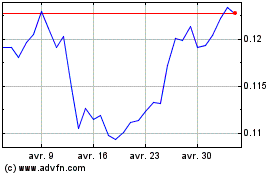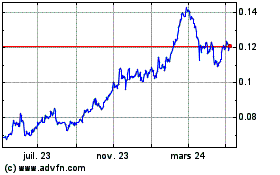Bitcoin ETFs Added To Michigan State Pension Fund With $6.6 Million Allocation
27 Juillet 2024 - 1:30AM
NEWSBTC
The approval of Bitcoin ETFs by the US Securities and Exchange
Commission (SEC) in January 2023 has opened the floodgates for
significant institutional investment in the newly approved
market. However, US states are also rushing to capitalize on
the success of these ETFs by allocating a portion of their pension
funds to reap profits and diversify their investments. Wisconsin,
Jersey City, Michigan Allocate Millions To Bitcoin ETFs The first
state to take the plunge was Wisconsin, which in May 2023 allocated
approximately $98.6 million, or 2% of its pension fund, to
BlackRock’s iShares Bitcoin Trust ETF. Now, two more states have
joined Wisconsin in allocating state pension funds to Bitcoin ETFs.
On Thursday, NewsBTC reported that the mayor of Jersey City, Steven
Fulop, announced that it is updating its paperwork with the SEC to
allow its pension fund to invest in Bitcoin ETFs. Related
Reading: VacEck Places $52.4 Million Price Tag On Bitcoin, But How
Is This Possible? The latest state to join the Bitcoin ETF
investment bandwagon is Michigan; as in an SEC filing on Friday
morning, the State of Michigan Retirement System reported owning
$6.6 million worth of shares in the ARK Bitcoin ETF managed by Ark
Invest, amounting to 110,000 shares as of June 30th. However,
Jersey City remains the only one that discloses the percentage of
the fund’s investment in the Bitcoin ETF market and which asset
manager will be selected to manage the fund’s allocation.
Still, this notes the significant traction that the new Bitcoin ETF
market has gained over the past seven months among institutions and
now these states, adding to the notable inflows and assets under
management surpassing the $17 billion milestone, eclipsing
tech-based ETFs. BTC Price Rebound Fueled By Spot ETFs The
Bitcoin price has steadily recovered over the past two weeks,
rebounding from a 6-month low of $53,500 at the beginning of July.
However, according to a new report by on-chain and market data
analytics firm CryptoQuant, this price recovery has continued to
rely on spot Bitcoin ETFs rather than a surge of new investor
inflows. The CryptoQuant report examined Bitcoin price movements
and new investor holdings over the past 8 years and found that in
previous long-term bull cycles, the Bitcoin price peaked when the
number of new entrants crossed a certain threshold, indicating a
strong “fear of missing out” (FOMO) driving inflows. However, the
firm contends that the current Bitcoin bull cycle does not exhibit
the same trend of new investor inflows at price tops. Instead, the
report noted that the recent spike in new inflows seen in the
year’s first quarter appears to be just a temporary wave between
longer-term cycle tops. Related Reading: Bitcoin Supply Drop
Signals Upbeat Price Movement, Analyst Says This suggests that
Bitcoin’s recent price recovery has been driven more by the inflows
into spot Bitcoin ETFs rather than a surge of new investors
entering the crypto market. While spot ETFs have supported
the Bitcoin price, the report indicates that a more sustainable
upside will depend on a return of new investor demand. When
writing, the largest cryptocurrency on the market was trading at
$67,530, up nearly 5% in the 24-hour time frame. Featured
image from DALL-E, chart from TradingView.com
TRON (COIN:TRXUSD)
Graphique Historique de l'Action
De Juin 2024 à Juil 2024

TRON (COIN:TRXUSD)
Graphique Historique de l'Action
De Juil 2023 à Juil 2024
